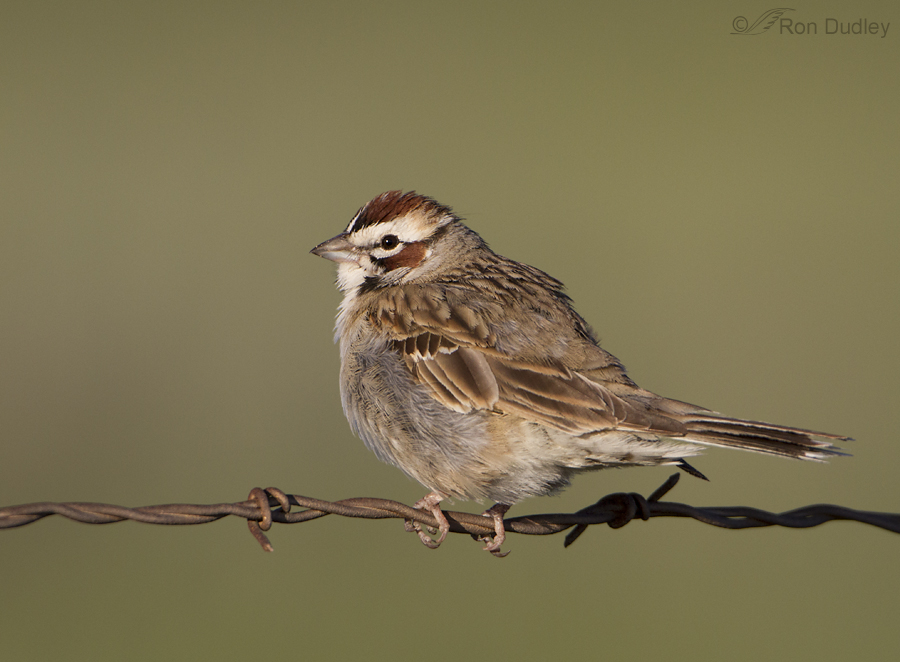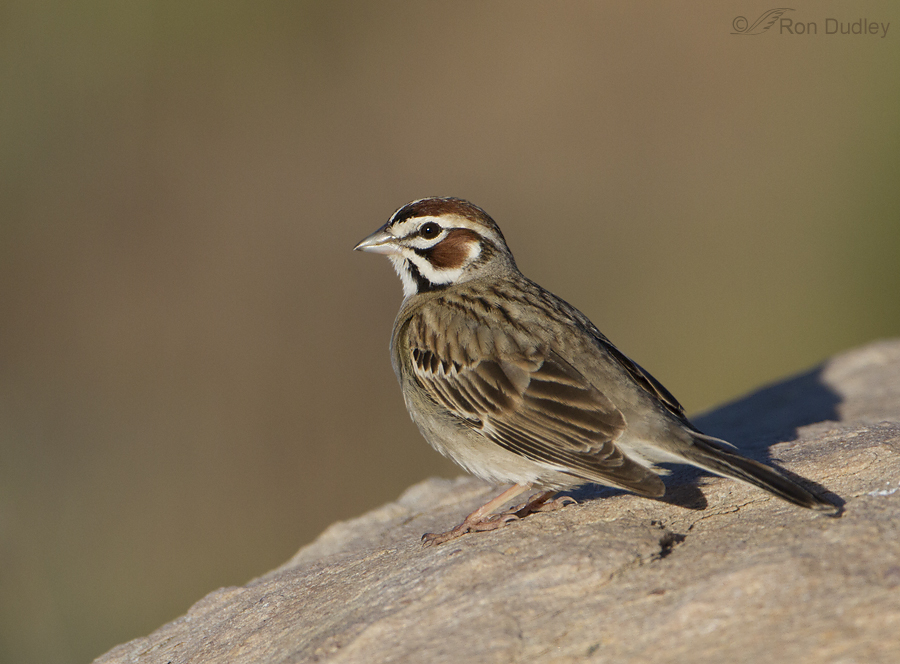When it comes to sparrows the Lark Sparrow with its distinctive and striking head pattern and long towhee-like tail is a particular favorite of mine. This is another species that often prefers disturbed habitats (I recently posted on the Mountain Plover) such as sites with exposed soils, fallow fields, grazing or recent fires, which may explain its decline in the eastern states as those lands that were cleared for agriculture during the mid-1800s are progressively taken over by urbanization or returned to forests.
1/1600, f/6.3, ISO 500, 500 f/4, 1.4 tc, natural light
Many folks just don’t like unnatural perches. When it comes to nature photography they prefer that no sign of the “hand of man” be apparent in the image. To others the perch doesn’t matter much as long as the bird (subject) is presented in an appealing manner.
These two images, both taken in the last few weeks, differ mostly in the perch (and the ruffled feathers in the first shot). Pose, angle of the bird, clean backgrounds and light angle are very similar but this rusty barbed wire is decidedly unnatural. The image was taken near the base of the Stansbury Mountains in Utah’s west desert.
1/4000, f/5.6, ISO 640, 500 f/4, 1.4 tc, natural light
This sparrow was hopping around on a large boulder on Antelope Island – thus a “natural” perch.
I guess I’m somewhere in the middle when it comes to perches as I like many rustic, man-made perches and settings such as rusty barbed wire and old weathered fence posts and barns (growing up on a farm probably has something to do with that). That said, I do generally prefer a natural perch.
Preparing this text made me realize how seldom I post sparrows of any species – a habit I plan on breaking.
Ron




I like both images equally. At my stage in learning this photography thing (one year this week), I’m just happy to get a bird in the viewfinder! I’m still working on backgrounds, lighting, perches and all the other thousand and one details that go into making an “image”. I’m getting the feeling that the learning may never end………..:)
I am grateful to see them any where. In an ideal world, natural perches have a lot of charm, but this isn’t a natural world. And, if the birds accept something enough to use it, who am I to argue. The contrasts are often amazing too. Which I suppose makes me a fence sitter – with no real preference for the type of fence.
Thanks, Elephant’s Child. Nothing wrong with sitting on a fence in this situation – for you or for the birds.
Beautiful, Ron! You know where I stand … I love me my unnatural juxtapositions with wildlife.
I know you do, Ingrid and you’re part of the reason I’ve become a little more flexible regarding perches and settings.
IMHO, some man-made items have been there so long that they almost qualify as parts of the natural scene, or at least the natural history of the scene. I think old rusty barbed wire fences, abandoned mining equipment, etc. all qualify and form appropriate backgrounds for wildlife photos. But that’s just me.
I agree with you, Dwynn – so it isn’t “just you”.
Though I really hate the whole concept of barbed wire, it adds to the story in the first photo…natural vs unnatural; curvy, cute and fluffy vs linear, hard and sharp; innocent and harmless vs deliberately cruel and wounding. Barbed wire is meant to hurt, to define and confine..but the bird can fly free! Though the colors are similar in bird and wire, nothing else is…a real study in contrasts. That’s what I like about it.
You’ve made some interesting observations and comparisons, Patty. Food for thought…
Great pictures! Natural perches are good, but I still like getting pictures when a bird is on a fence or a bird bath. I guess I’m in the middle too.
Thanks, Sam.
Great images of a beautiful sparrow!
You certainly put yourself in a great position to take excellent pictures of this sparrow.
By any chance do you see Lazuli or Lark Buntings in your area.
When we camped out west back in the 70’s, got those life birds in Montana.
Dick, Lazuli Buntings are relatively common in some areas of Utah, including the Salt Lake Valley, but most of my images of the species were taken in the San Rafael Swell in the central part of the state. Here’s a link: https://featheredphotography.com/blog/2011/12/20/lazuli-buntings-of-the-san-rafael-swell/
I’ve never photographed a Lark Bunting.
WOW!!
That bird was one of my favorites when we went out west.
Probably its beauty and that it was a lifer had something to do with it being high on my list!!
Many thanks for showing this set, much appreciated.
Sensational shots of a pretty little bird! I agree with you. I’m in the middle on perches. I kinda’ like the barbed wire man made or not. Shows some adaptability of the birds as well. It’s amazing how they can survive our contraptions.
Charlotte Norton
Thanks, Charlotte. To my slanted way of thinking the barbed wire is almost a natural perch for this species since it so often prefers disturbed habitats…